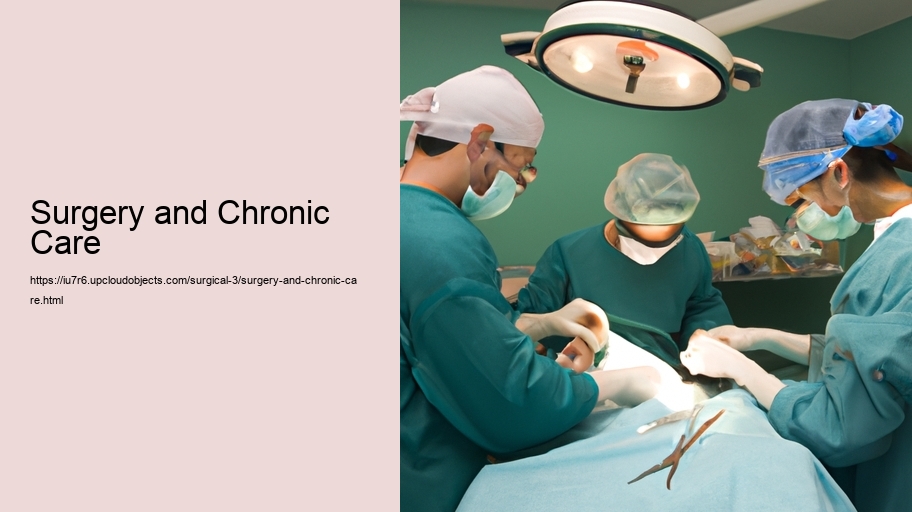Surgery and Chronic Care: Navigating the Crossroads of Healing and Management
The journey of a patient through the healthcare system is often multifaceted, especially when it intersects the realms of surgery and chronic care. On one side of this spectrum, surgery represents a pivotal moment of intervention-a singular event with the aim to repair, remove, or improve a bodily function or structure. On the other side, chronic care unfolds as a continuous process, addressing long-term conditions that require ongoing management. The interplay between these two aspects of healthcare is complex and requires a nuanced understanding to ensure the best possible outcomes for patients.
Surgery is often perceived as a decisive action, a choice to actively correct an issue that has been identified. It is a moment where science and skill converge in the operating room, where surgeons employ years of training to alter the course of a patient's health trajectory. While the goal of surgery is generally to resolve a specific problem, it is not always a standalone solution. In cases where the underlying issue is part of a chronic condition, surgery might be a step in an ongoing treatment plan rather than a conclusive cure.
Postoperative care is the first bridge between the acute intervention of surgery and the long-term journey of chronic care. This period is crucial for recovery, but it is also a time to plan for the future. Patients and healthcare providers must work together to ensure that the surgical intervention is integrated into the larger picture of the patient's health. For example, a patient with diabetes undergoing surgery for a foot ulcer must continue to manage their blood sugar levels to prevent further complications. Similarly, a patient with heart disease may require surgery to place a stent but will still need to adhere to a regimen of medication and lifestyle changes to manage their condition.
Chronic care, by its nature, is about adaptation and persistence. It involves regular monitoring, medication management, lifestyle adjustments, and, at times, the acceptance of limitations. Patients with chronic conditions often build long-term relationships with their healthcare providers, creating a continuity of care that can greatly improve their quality of life. The challenge within chronic care is to maintain an equilibrium-keeping the condition under control while allowing patients to live as fully and independently as possible.
When a patient with a chronic condition requires surgery, it adds another layer of complexity to their care. Healthcare providers must consider the chronic condition when planning for surgery, taking into account how it might affect the procedure and recovery process. For instance, a patient with chronic obstructive pulmonary disease (COPD) will need specialized respiratory support during and after surgery. Moreover, the stress of surgery can exacerbate the symptoms of a chronic condition, necessitating a careful balancing act to manage both the surgical recovery and the ongoing condition.
Furthermore, the psychosocial aspects of chronic care cannot be overlooked. Living with a chronic condition can take a toll on mental health, and the prospect of undergoing surgery can add to this burden. Healthcare providers must be attuned to the emotional and psychological needs of their patients, offering support and resources to help them cope with the challenges they face.
The intersection of surgery and chronic care is also a place of innovation. New surgical techniques, such as minimally invasive procedures, can reduce recovery time and the impact on patients with chronic conditions. Advances in medical technology, such as telehealth and remote monitoring, are expanding the possibilities for chronic care management, making it easier for patients to stay connected with their healthcare providers and maintain control over their health.
In conclusion, the relationship between surgery and chronic care is one of interdependence. It requires a holistic approach that sees the patient as more than just a diagnosis or a surgical case. It calls for a collaboration between specialists and primary care providers, integrating acute interventions with long-term management strategies. As we continue to advance in the fields of medicine and technology, our understanding of how to best serve patients at this crossroads will only deepen, leading to more personalized and effective care. Ultimately, it is through this careful balancing act that we can provide patients with not just longer lives, but lives lived well.
